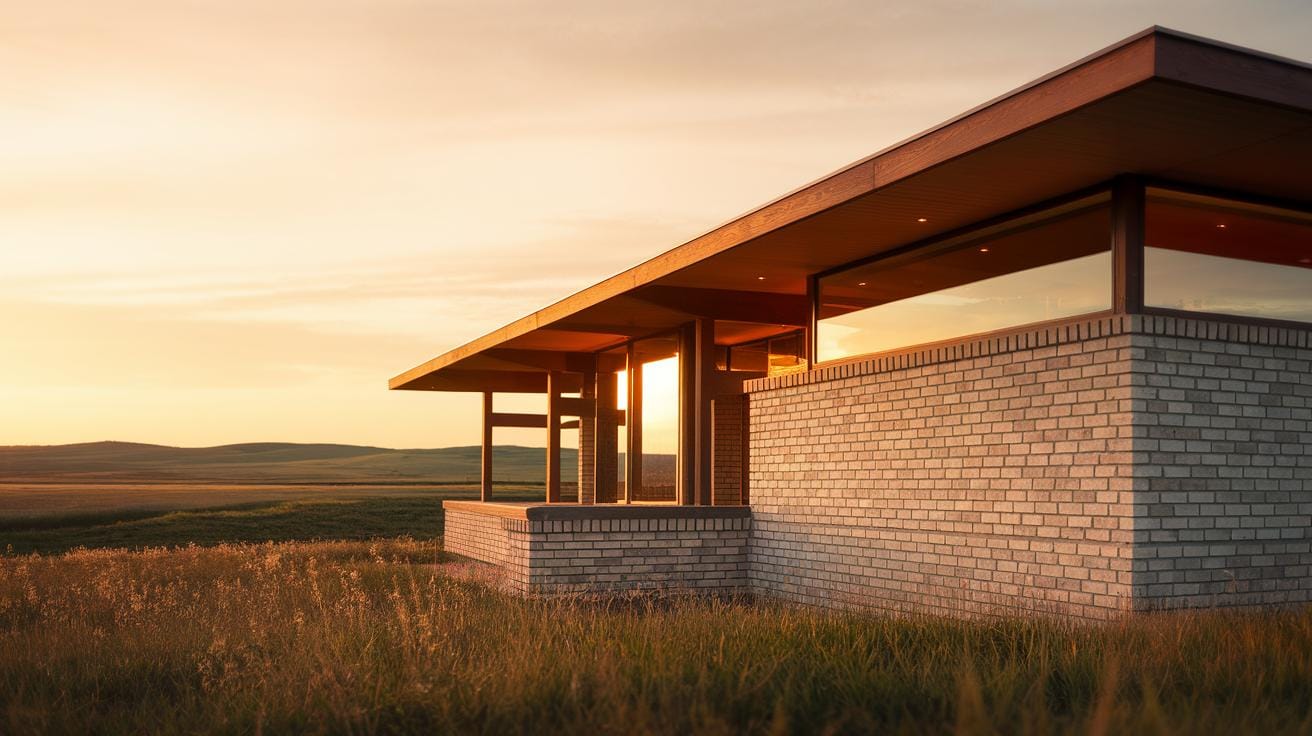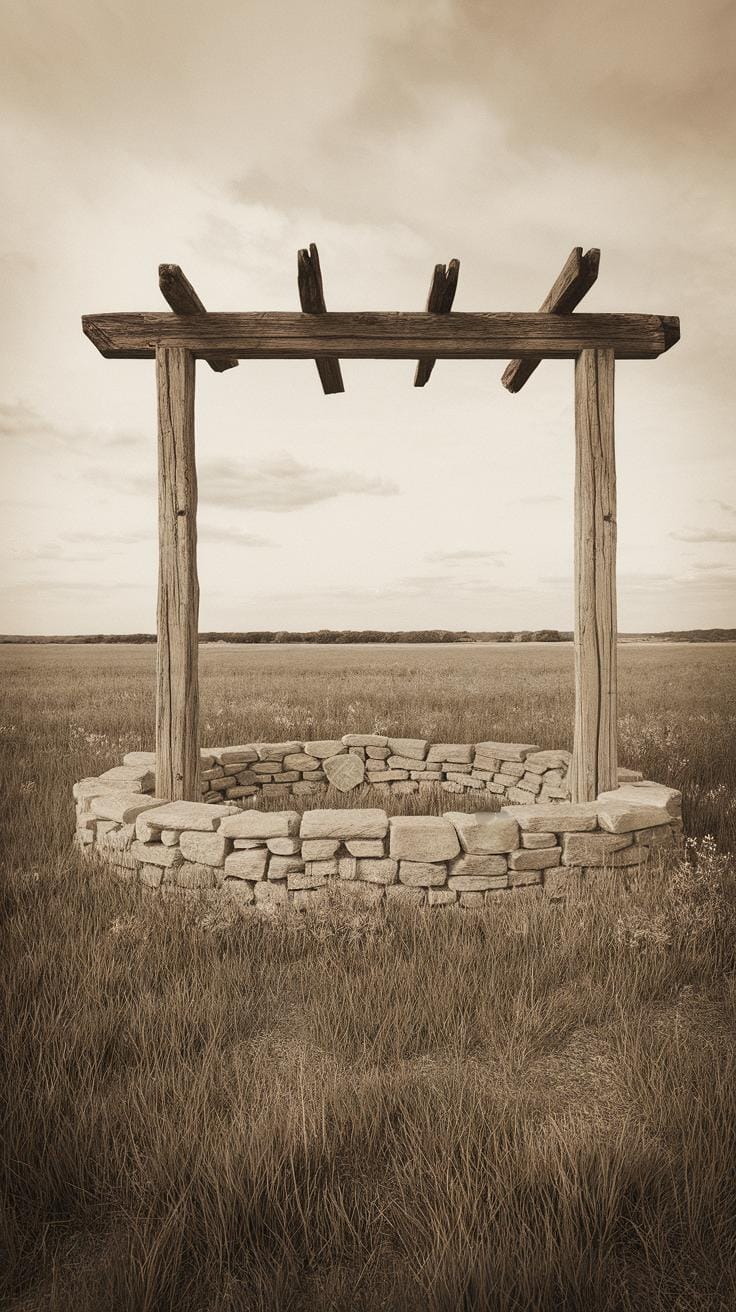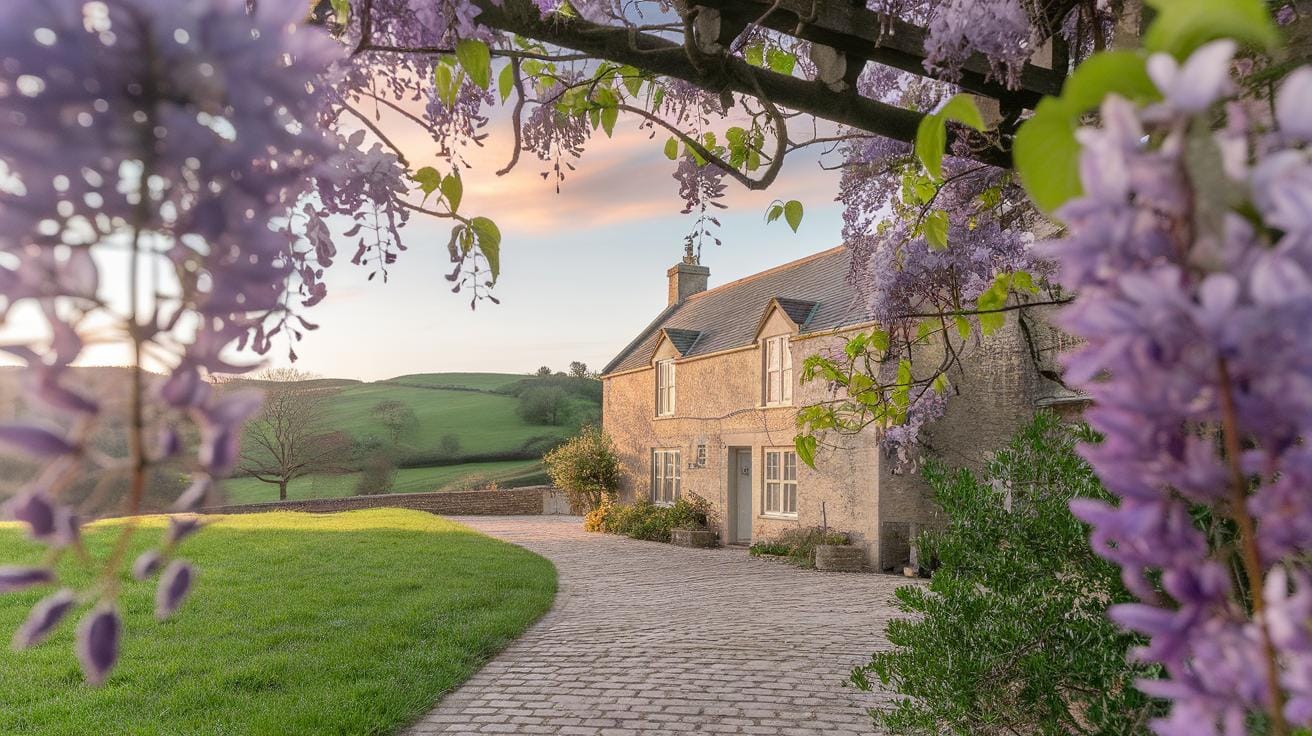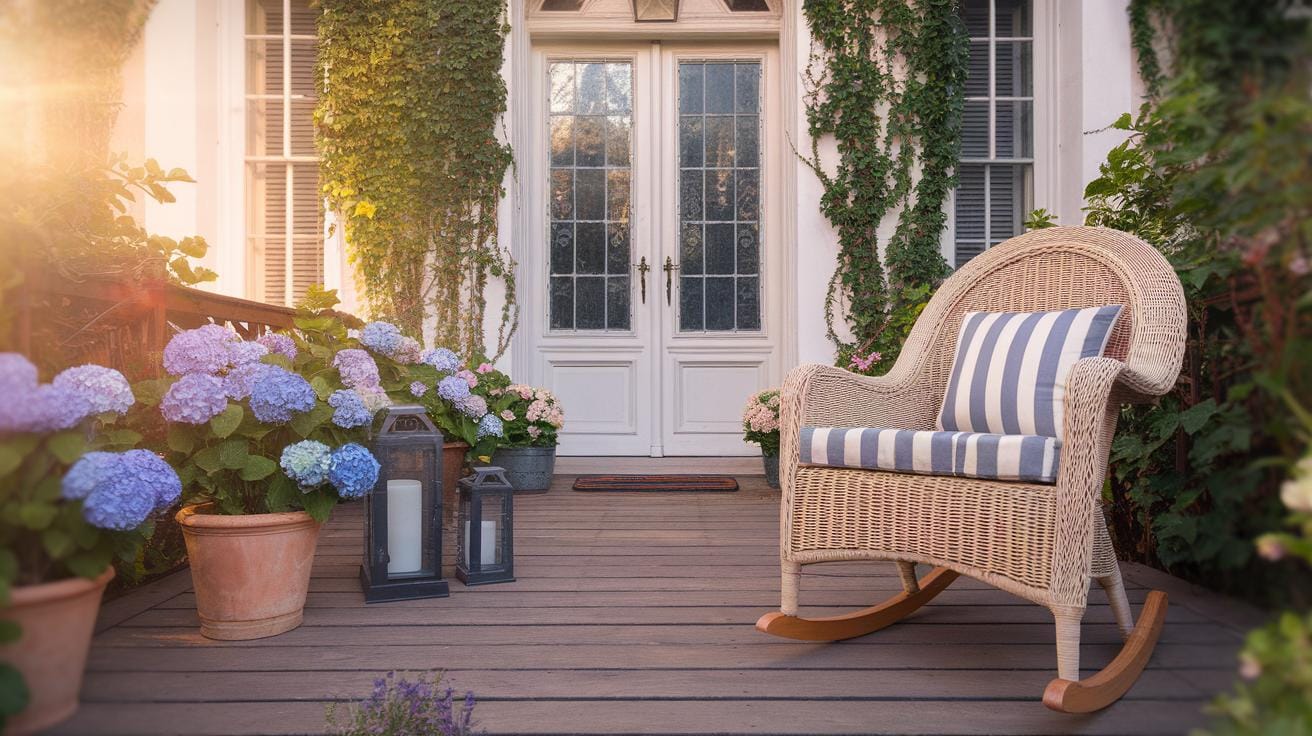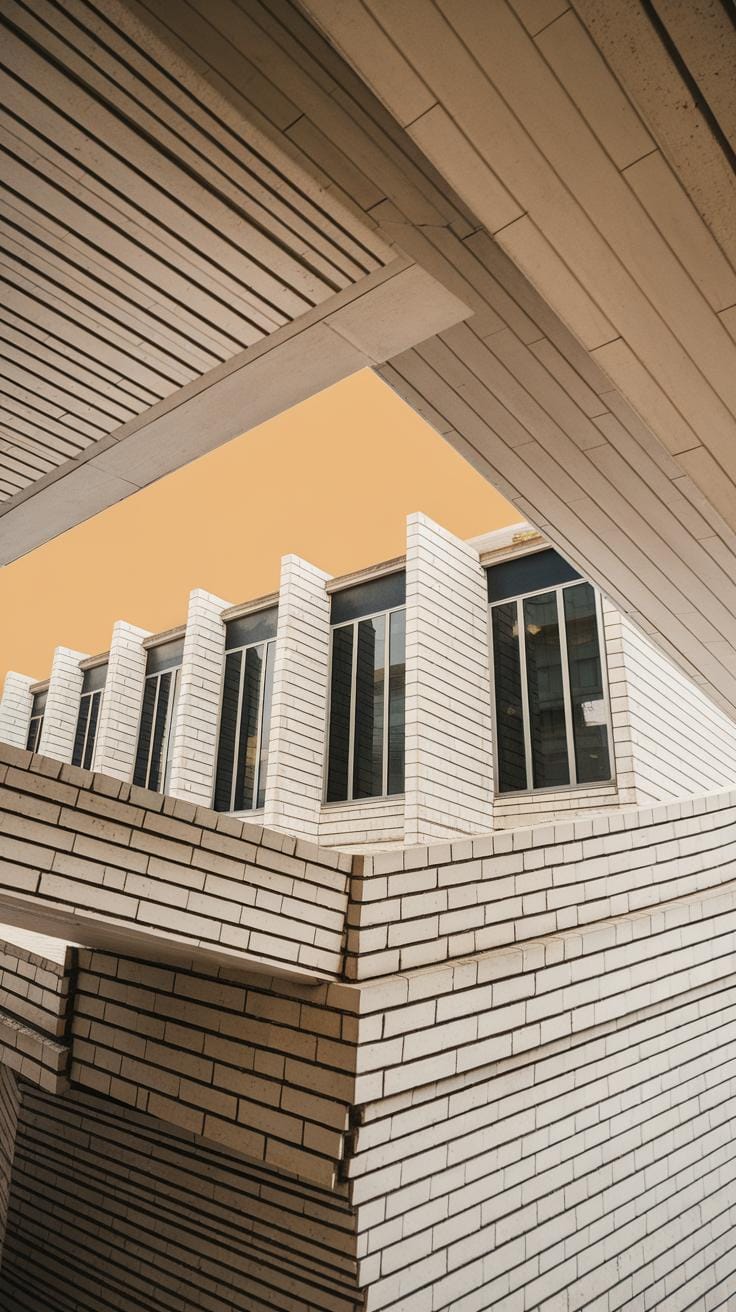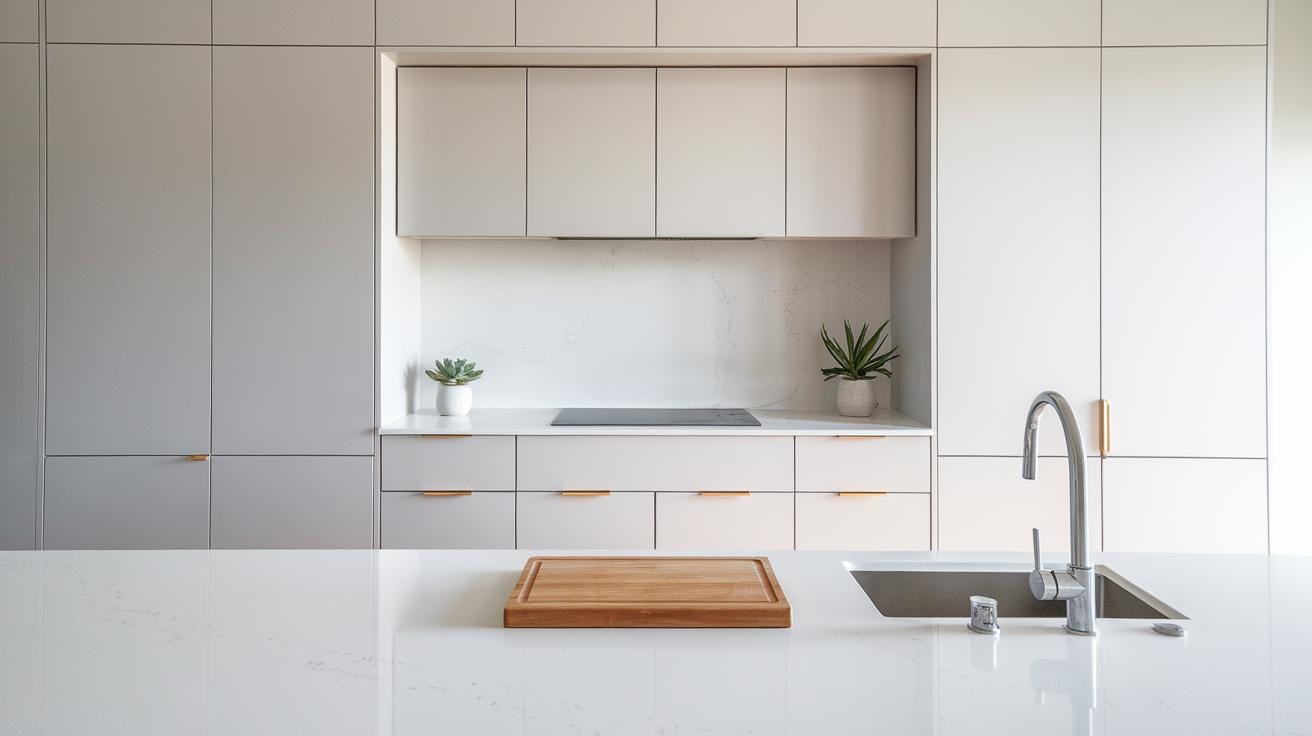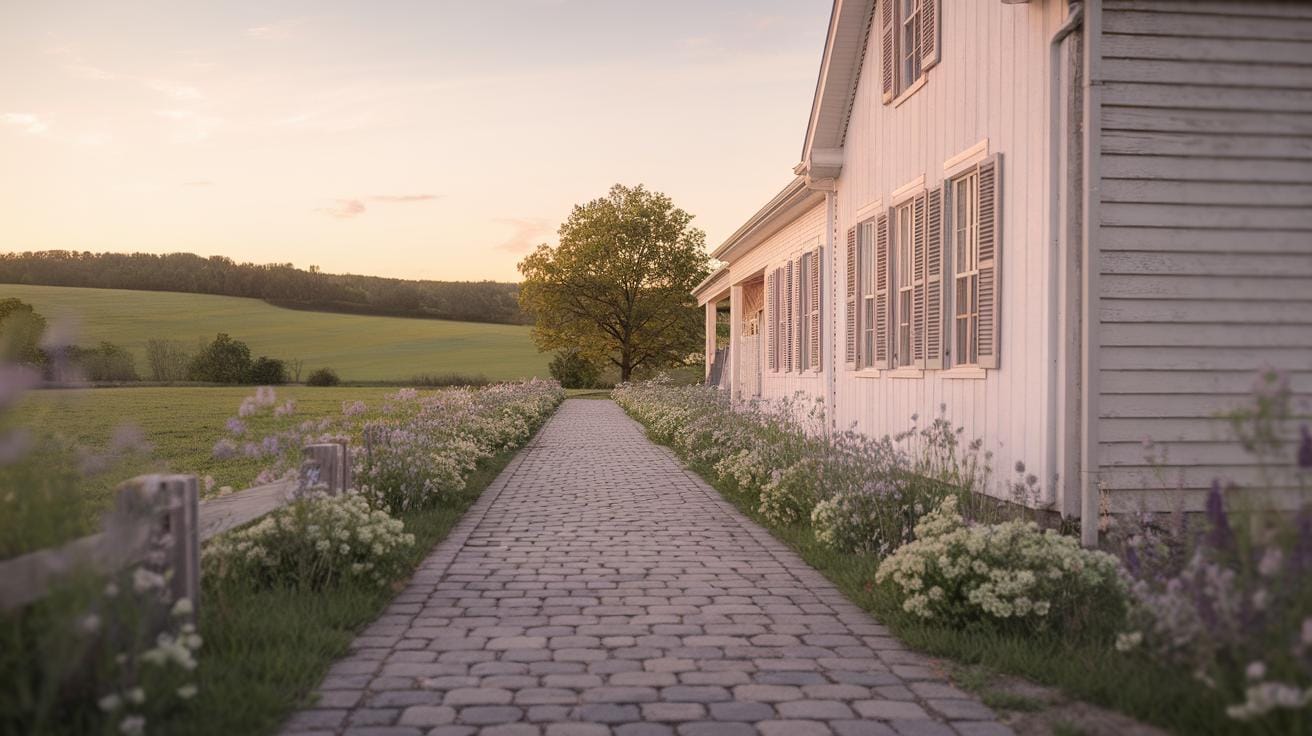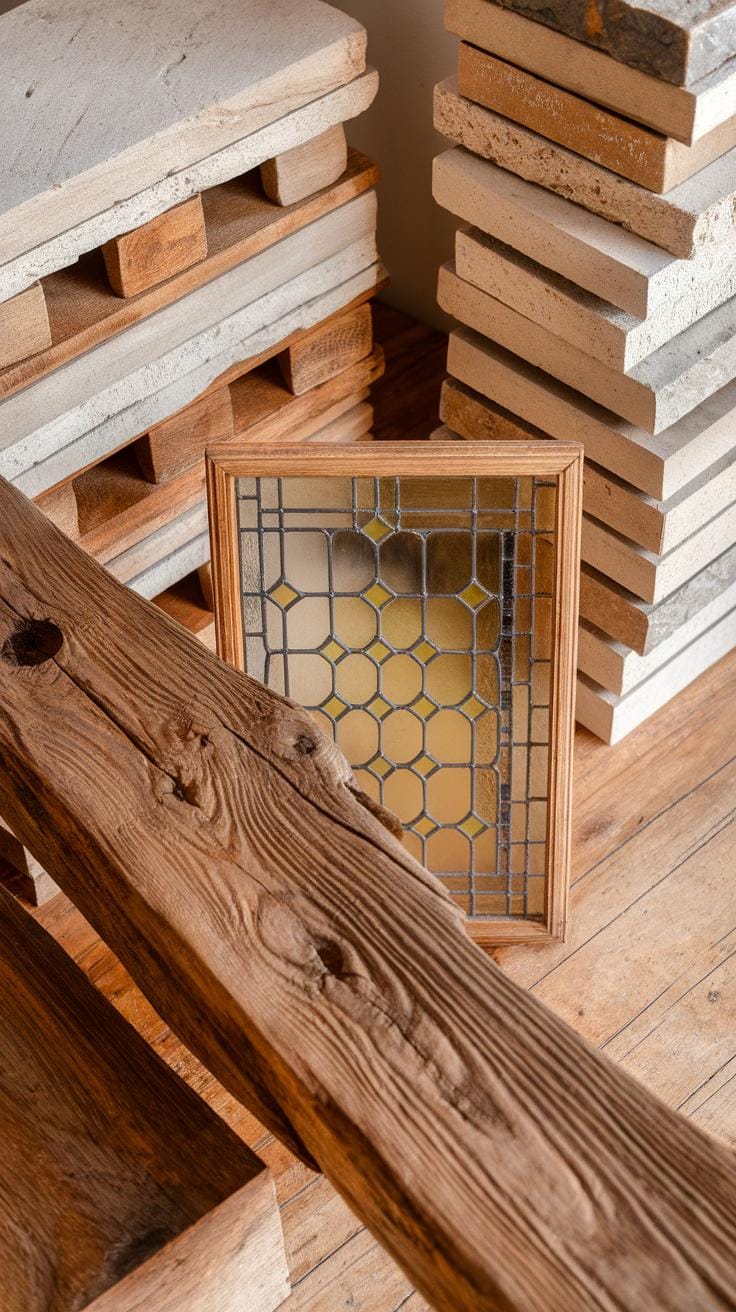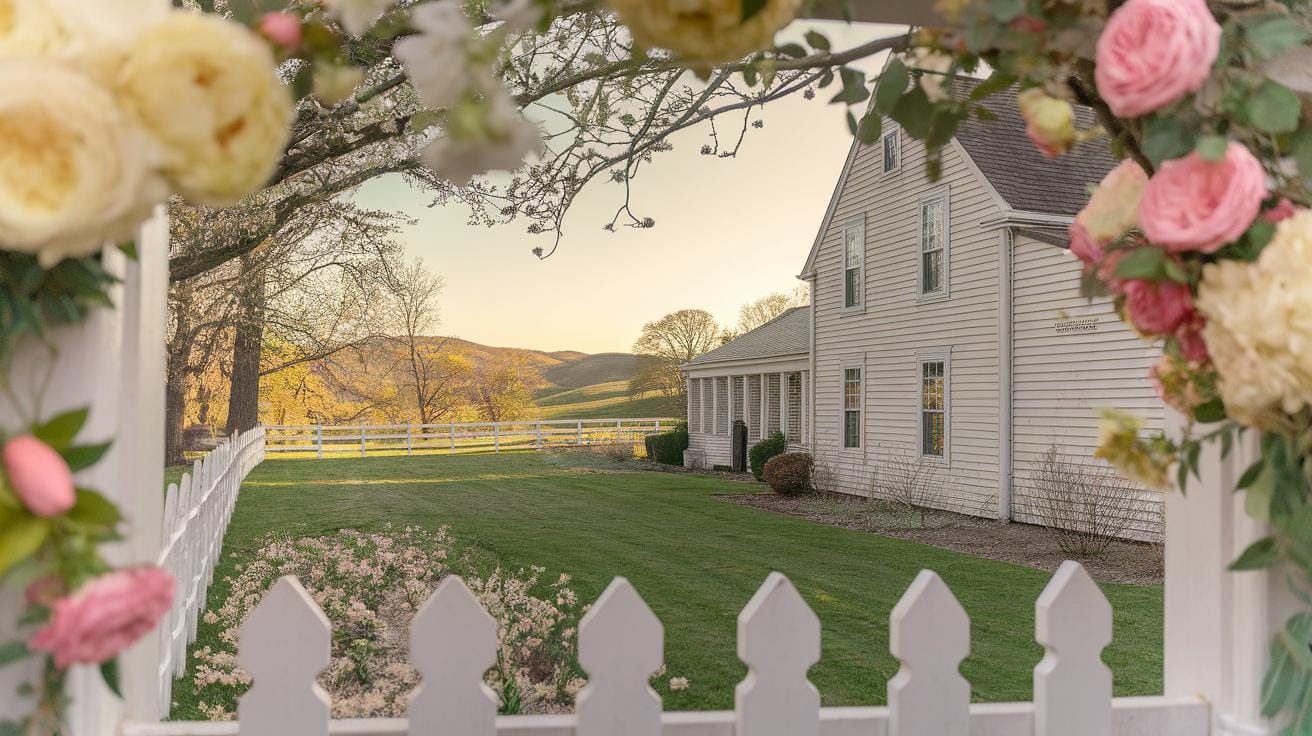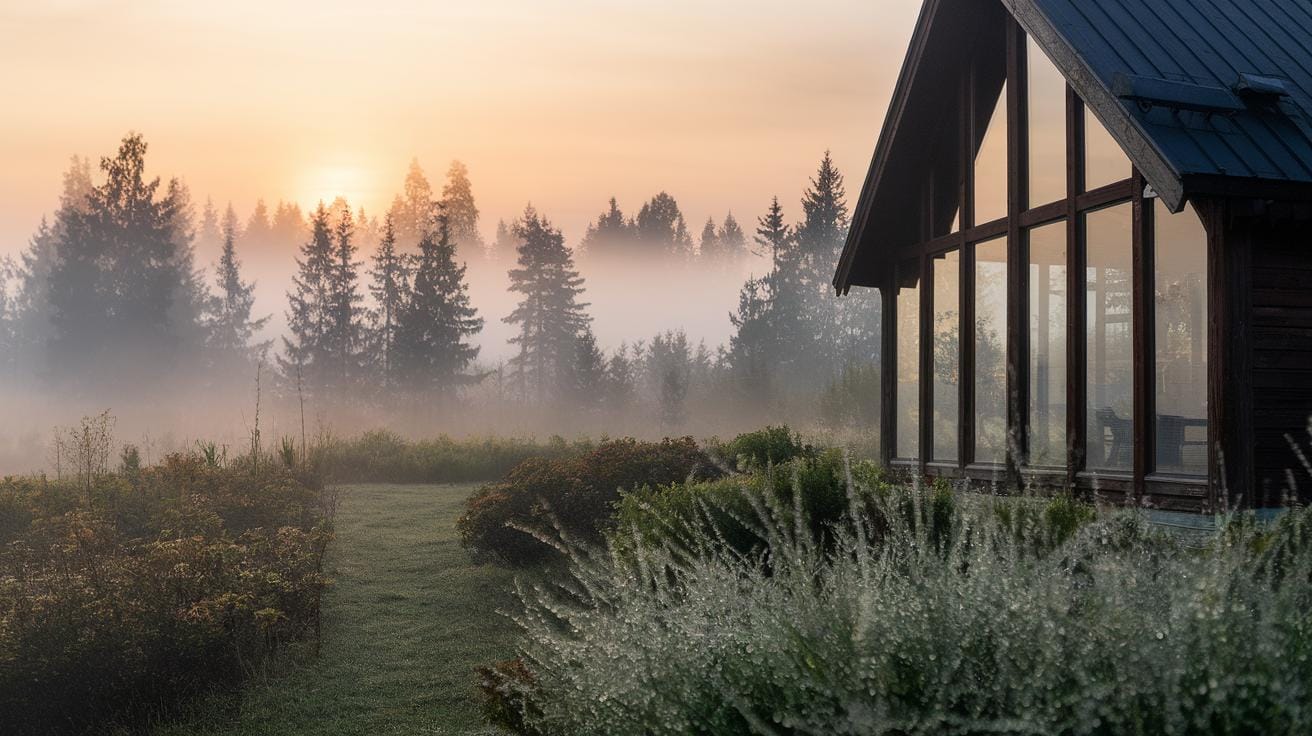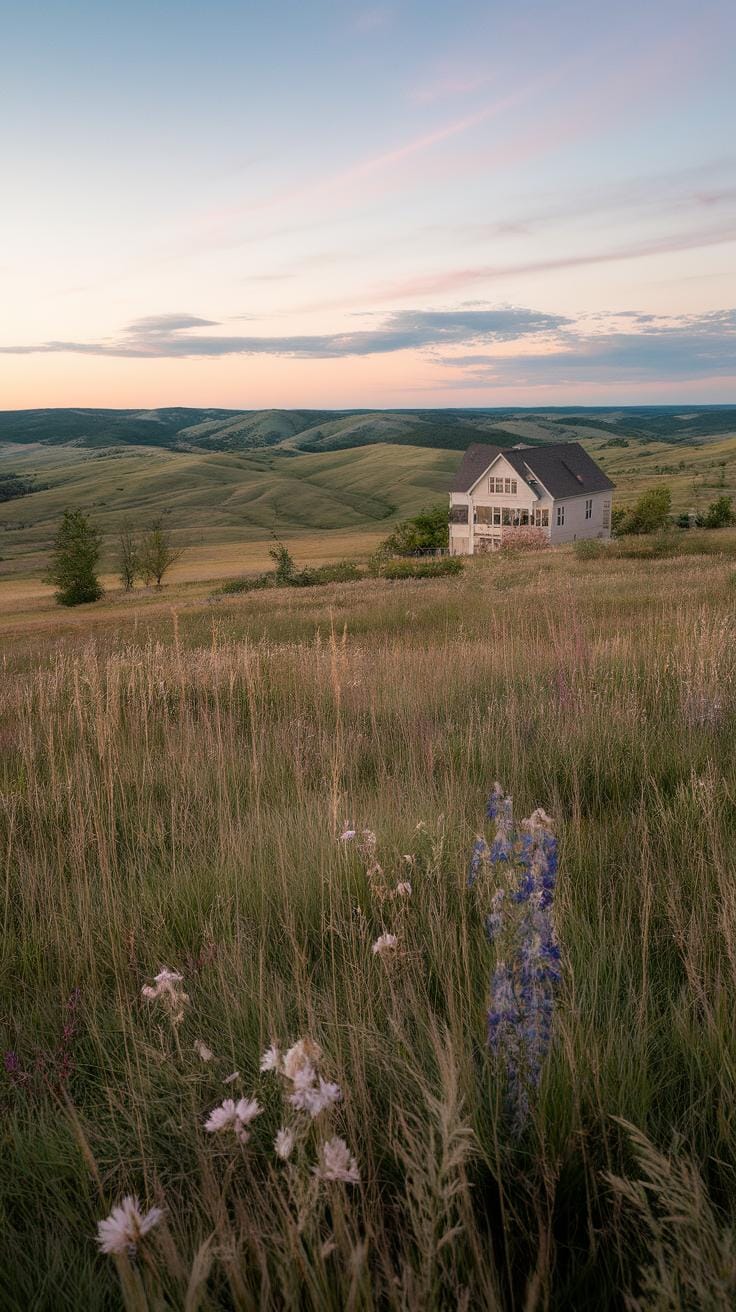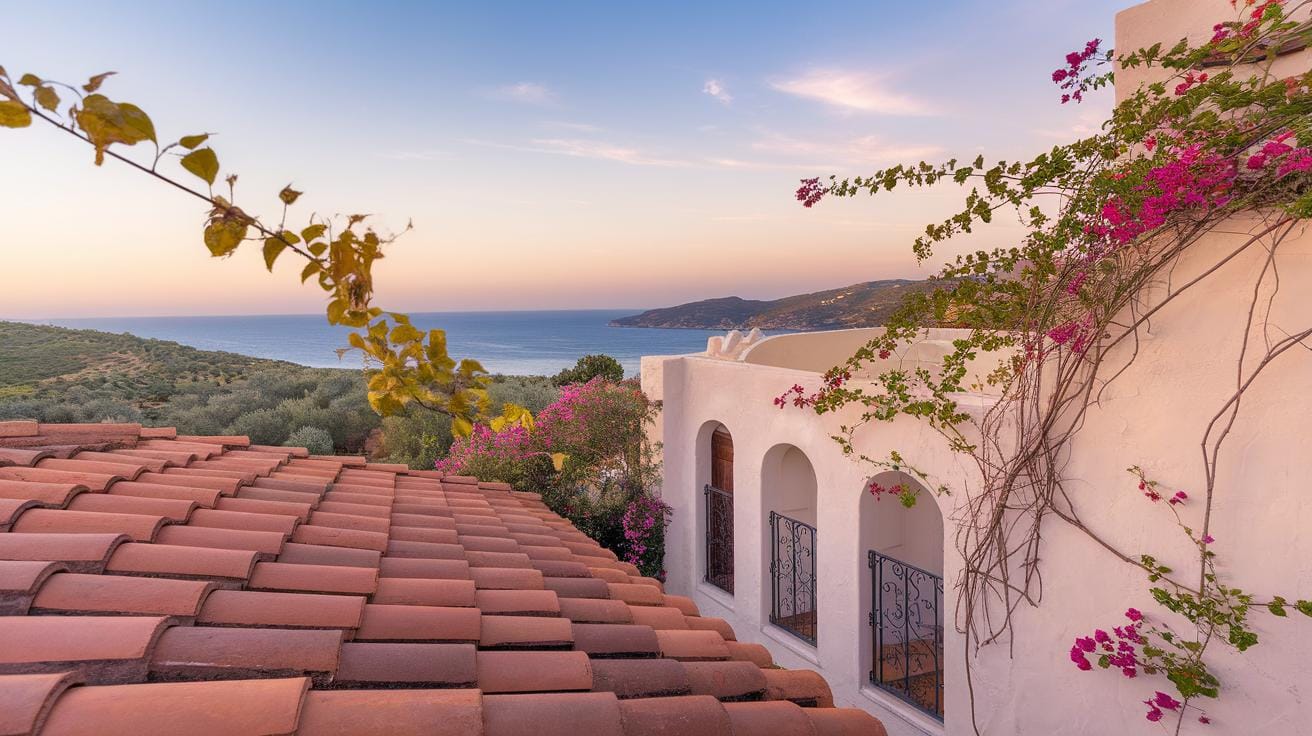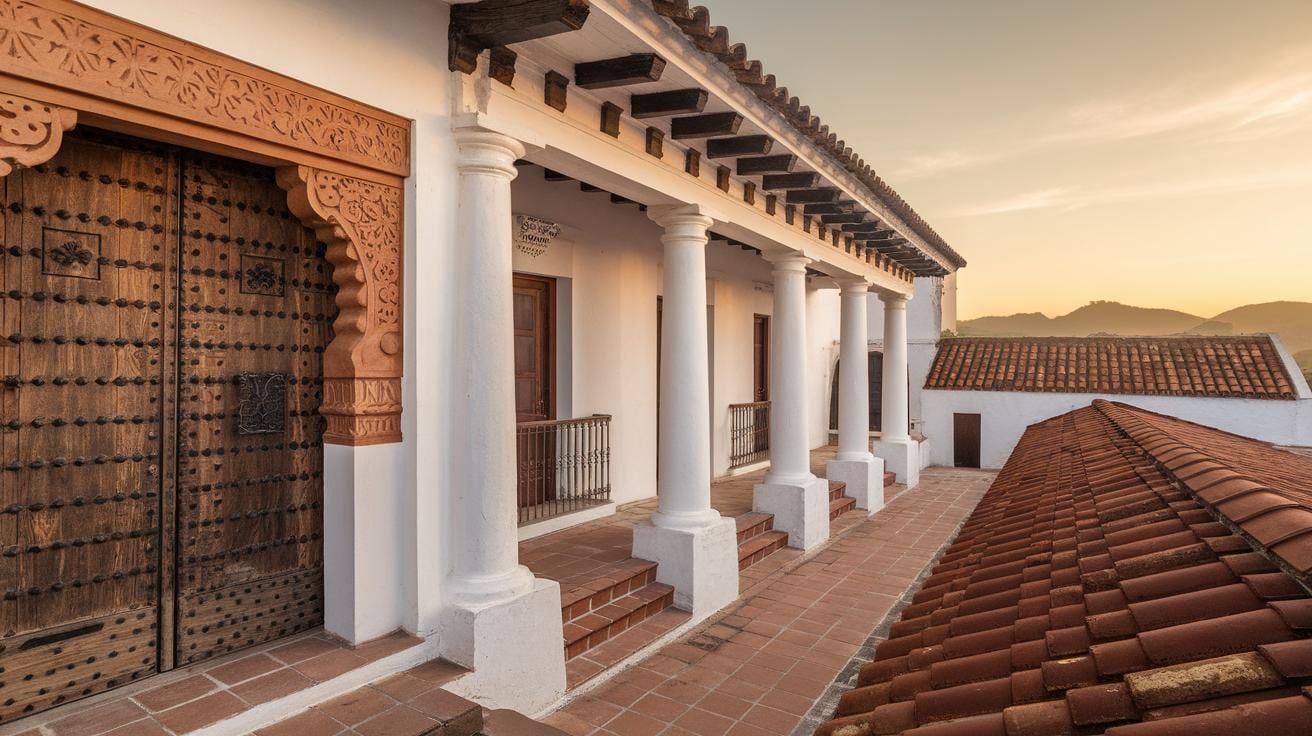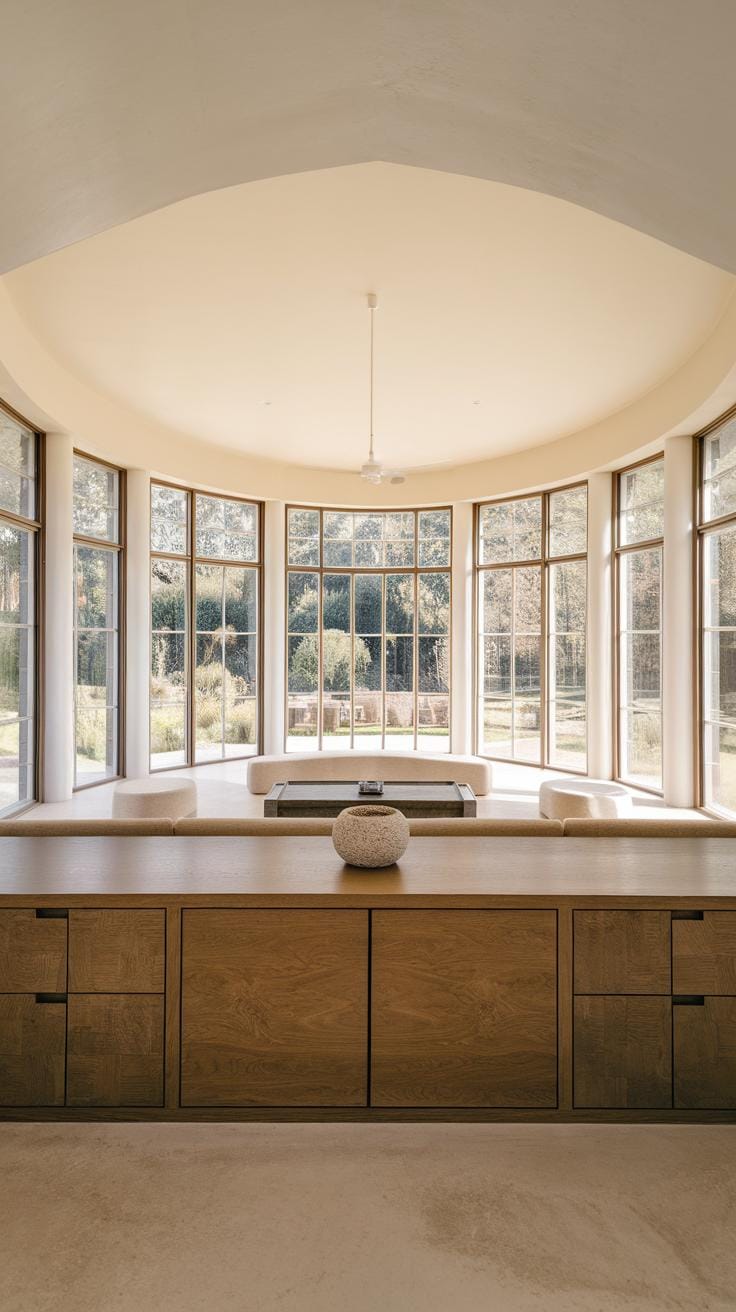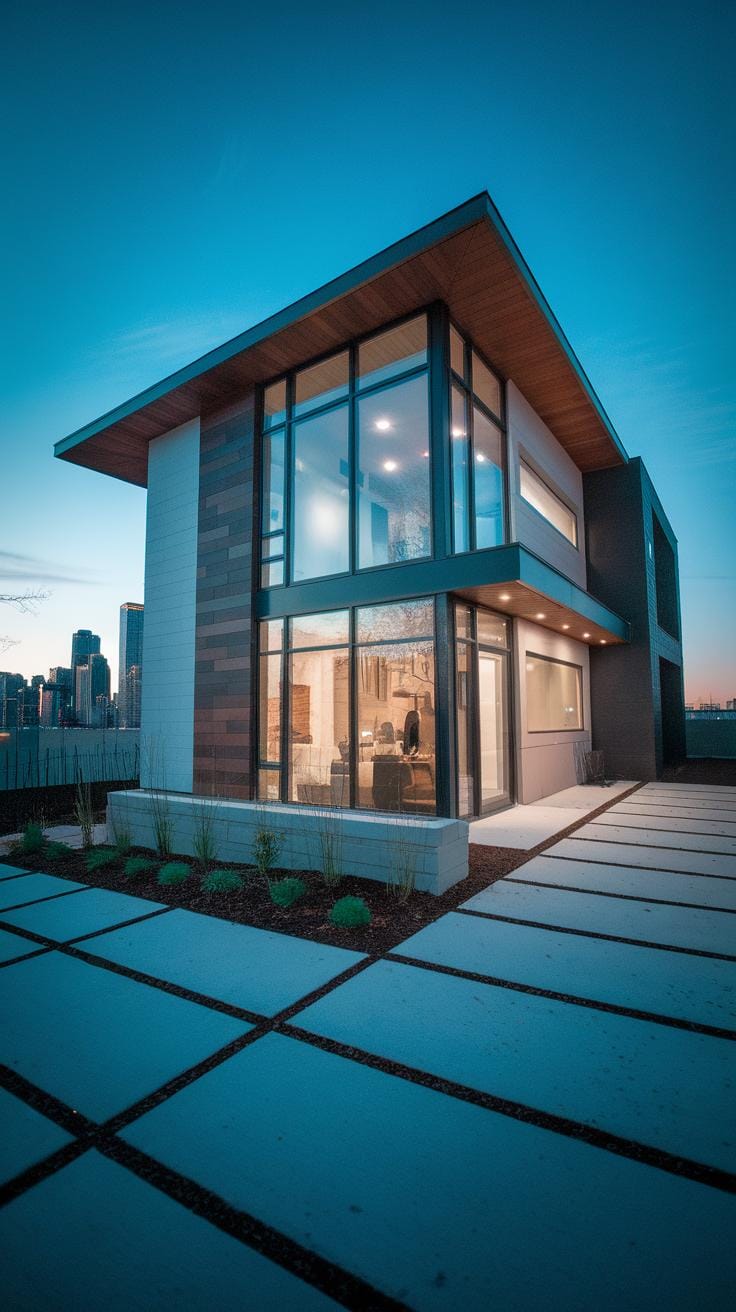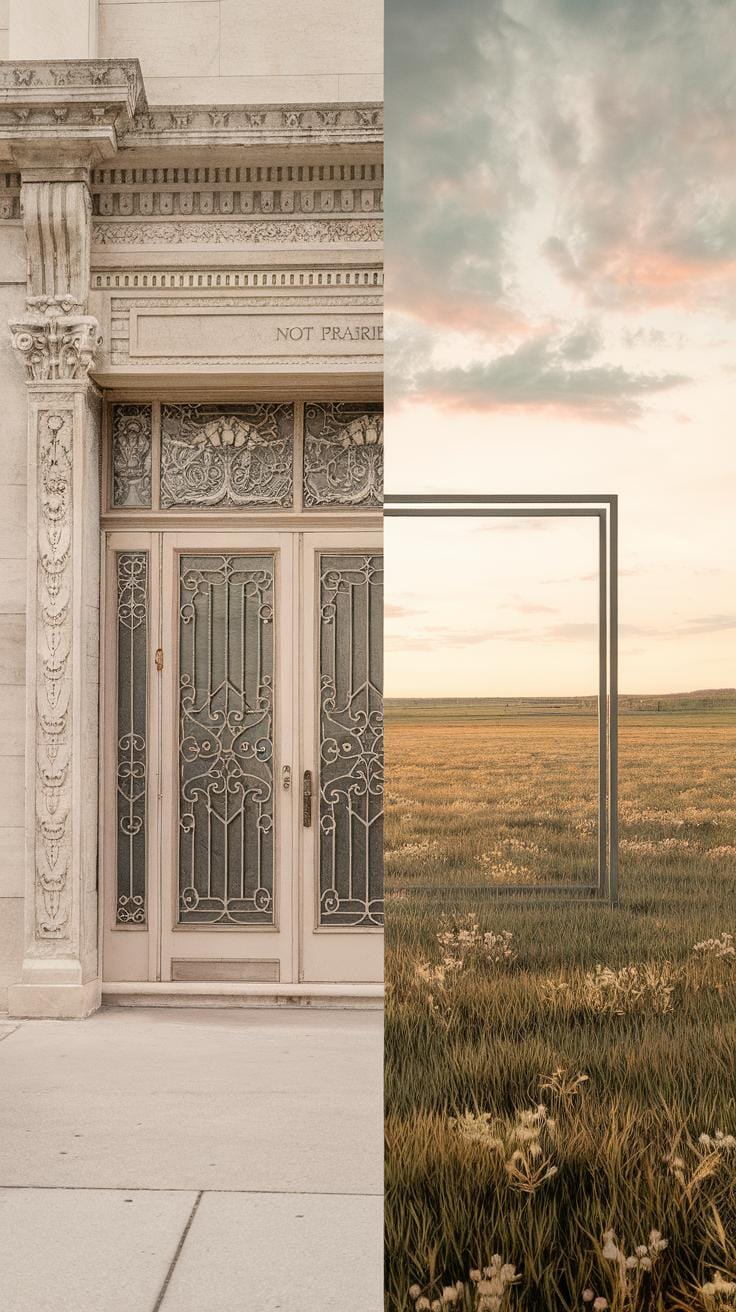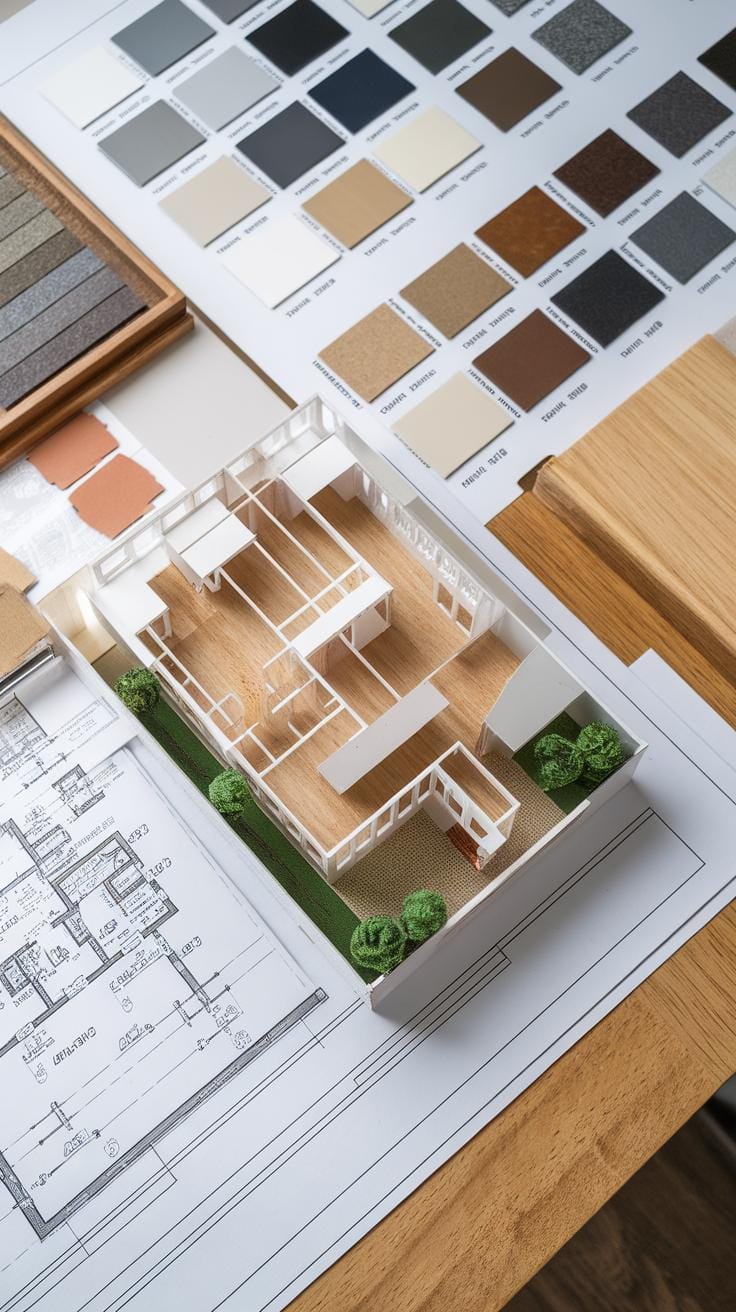Introduction
Prairie style houses represent a distinctive architectural tradition that arose in the early 20th century, primarily in the Midwestern United States. This style emphasizes horizontal lines, flat or hipped roofs with wide eaves, and windows grouped in bands to create a strong visual link with the expansive prairie landscape. The design seeks to harmonize buildings with their natural surroundings, often evoking a sense of spaciousness and solid craftsmanship. If you have ever admired homes that seem to grow naturally from the ground, you have glimpsed the essence of Prairie architecture.
This style was pioneered by architects like Frank Lloyd Wright, who believed that architecture should be organic—reflecting and belonging to the environment it occupies. Prairie style homes reject European classical motifs in favor of simplicity, integration with nature, and quality craftsmanship. Are you curious about what defines these homes and how their design ideas can influence modern living spaces? This article explores the key elements, history, and principles of Prairie style houses to help you recognize and appreciate their unique qualities.
Origins and Historical Context of Prairie Style
Prairie style architecture began in the late 1800s in the Midwest United States. Architects sought a new design that fit the wide, flat landscapes around them. They wanted to create buildings that felt natural in this setting, moving away from old European classical styles with their heavy ornamentation.
The Chicago World’s Fair of 1893 played a big role in inspiring this change. The fair showed the need for architecture that reflected American life and values. Designers aimed to develop a style that was original to the U.S. rather than copying European models.
This new approach combined ideas from the Arts and Crafts and American Craftsman movements. These movements focused on simplicity, craftsmanship, and harmony with nature. Prairie style stood out by emphasizing open interior spaces, low horizontal lines, and strong connections to the land. How can your home’s design respect and reflect its environment like these early architects intended?
Key Influences on Prairie Style Architecture
The Arts and Crafts Movement deeply shaped Prairie style architecture. This movement pushed back against the rise of factories and mass-produced goods during the Industrial Revolution. It promoted handcrafted work, using natural materials like wood and stone.
You will notice Prairie homes use these materials in honest ways, letting their textures and colors show. The style values details made by skilled hands over artificial decorations. It also highlights functional design — every element has a purpose.
By following these philosophies, Prairie style creates buildings that feel connected to nature and human touch. This approach encourages you to think about the materials and craftsmanship in your own home. What story does your building’s makeup tell?
Development and Spread of the Style
Prairie style architecture grew mainly in the Midwest, especially around Chicago. Frank Lloyd Wright was a key figure who shaped the style. He designed houses that broke with traditional formats, focusing on horizontal lines and open floor plans.
Other architects joined Wright to form the Prairie School, spreading this style across states like Illinois, Wisconsin, and Iowa. Their work showed how homes could blend with the landscape instead of standing apart from it.
As you consider your own space, think about how design moves away from strict rules to fit place and lifestyle. Can a home’s style grow from its location and your needs, rather than just following trends?
Defining Characteristics of Prairie Style Houses
Prairie style houses stand out with clear, recognizable features that create harmony between the home and its surroundings. One key element is the focus on horizontal lines. These lines stretch across the facade, lending a grounded and expansive look. Roofs in Prairie homes often come with flat or low-pitched hipped shapes. Wide eaves extend far beyond the walls, emphasizing that horizontal reach and providing shelter that blends the indoors with the outdoors.
Windows usually appear in groups, arranged in horizontal bands. This pattern lets more natural light flood inside and opens views to the outside environment. The arrangement also encourages a feeling of openness and connection with nature. These grouped windows often include art glass or geometric patterns that add detail without disrupting the horizontal flow.
Another defining trait is how Prairie homes seem to rise naturally from their landscape. Architects designed these houses to fit into flat, open areas, using materials and shapes that reflect the surrounding plains. This creates a smooth, almost seamless transition from yard to porch to interior living space. How might you use these principles in your own home design to blur the lines between inside and outside?
Horizontal Emphasis and Roof Design
The emphasis on horizontal lines anchors Prairie style homes to the earth visually and physically. Long, flat planes stretch across the exterior, making the house appear wide and strong. These lines mimic the flat horizons of the Midwest plains where the style first took root.
Roofs play a crucial role in supporting this horizontal feel. Flat or gently sloping hipped roofs keep the house low and broad. The broad eaves project far beyond the walls, casting shadows that accentuate the horizontal planes below. They also protect the walls from rain and sun, helping the home feel connected to its environment.
These roof shapes do more than shape the home’s profile. They create shelter that links indoor and outdoor spaces. For example, deep eaves offer sheltered patios or porches, extending living zones outside. When thinking about your home, how could a roof’s form influence your connection to nature?
Window Groupings and Natural Light
Prairie homes commonly feature windows arranged in horizontal bands rather than individually spaced openings. This design pulls the eye across the structure and maintains the emphasis on width and openness.
Grouping windows like this also maximizes natural light inside the house. Rooms flood with daylight, reducing the need for artificial lighting during the day. The windows often include detailed mullions that create visual interest without breaking the continuous horizontal line.
This arrangement helps blend the boundaries between inside and outside. You see more of the landscape while inside, and the outside views become part of your daily experience. When you design or renovate, consider how grouping windows can brighten rooms and deepen your connection with the outdoors.
Materials and Craftsmanship in Prairie Style
Use of Natural and Local Materials
Pioneer architects of Prairie style homes chose materials found near the building site. Wood, stone, and brick came from the local environment. This choice ties the house visually and physically to its surroundings.
Using natural materials helps the building age gracefully over time. It also limits transportation costs and supports local industries. You will notice the wood grain and stone texture connect the house to the prairie landscape.
When selecting materials, craftsmen considered durability and beauty. They avoided synthetic or mass-produced products that might clash with the home’s natural look. This approach creates a subtle harmony between the structure and the earth beneath it.
Have you thought about how material choices influence your sense of place? Prairie homes prompt owners to appreciate the natural world through every wall and window.
Artisan Craftsmanship and Detailing
Prairie style houses stand apart through their detailed handwork. Every wooden beam, stained glass panel, and stone detail receives careful attention. Craftsmen carve geometric designs into window frames or door panels, adding personality and warmth.
Stained glass often features simple patterns inspired by nature. These windows cast colorful light inside, creating a quiet but rich atmosphere. You notice the skill involved in fitting each piece perfectly without overloading the design.
Masonry work includes carefully laid stone with shapes and colors matched for a natural effect. This kind of craftsmanship resists the uniform look of factory-built homes.
When you enter a Prairie home, these handmade details invite a closer look. They reveal the builder’s dedication. How does this compare to the plain surfaces found in modern mass housing?
Integration of Prairie Style with the Landscape
Pierre houses found in the Midwest show a clear connection to their flat, open surroundings. Architects design these buildings to stretch out, following the land’s natural lines. Placing a house low on its site enhances this feeling, keeping it close to the earth instead of towering above it.
You will notice wide, overhanging eaves and low-pitched roofs that extend the horizontal feel. Large windows often face outward, providing views of the plains and inviting nature inside. This careful positioning helps the home feel like part of the prairie rather than an interruption.
Have you wondered how a house can reflect the quiet vastness of the prairie? The answer lies in how its shape, siting, and openings respond directly to the landscape around it.
Designing with the Site in Mind
Architects choose a site for Prairie style homes to emphasize the building’s horizontal lines. They often place the house on flat or gently sloping ground, allowing it to stretch along the horizon.
Orientation matters. Windows and porches face views of the open land, connecting indoor and outdoor spaces. This strategy reduces the visual impact of the home, making it feel less like a structure and more like an extension of the natural ground.
You can spot these houses because their lines seem to echo the earth. This approach creates balance and harmony, inviting you to pause and appreciate your surroundings.
Landscaping and Exterior Features
Landscaping around Prairie homes usually avoids formal gardens or heavy plantings. Instead, native grasses and low shrubs blend with the wide prairie views. This simple approach supports the home’s link to its environment.
Stone walkways and patios use local materials to reinforce this natural feeling. Carved wood details and natural colors on the exterior continue the open, earthy theme you see in the prairie itself.
How can your yard feel like part of the prairie? Choose plants that thrive naturally there and keep design elements unobtrusive, letting the flat landscape shine rather than compete with your home’s strong lines.
Frank Lloyd Wright and Organic Architecture
Frank Lloyd Wright is often linked to Prairie style because he shaped its key ideas. His philosophy of organic architecture demanded that buildings fit their surroundings as if they belonged there. Wright thought architecture should not feel forced or separate from the land. Instead, houses should rise naturally from their ground, matching the environment’s shape and materials.
This approach changed how homes were made. It emphasized harmony between the house, the site, and its users. Wright’s designs avoided tall, closed facades in favor of low, horizontal forms that stretched across the landscape. This design made it look like the building was part of the land rather than an addition to it. His work inspired many architects to consider the environment as an essential partner in design, especially in flat, open regions like the Midwest prairie.
Wright’s Architectural Vision
Wright’s idea of organic architecture means the house should feel alive with its location, not stuck on it. He believed the structure must grow from the site, shaped by natural features such as land slopes, plants, and sunlight. This led to the Prairie style’s emphasis on harmony with nature.
He used horizontal lines and extended roofs to echo the prairie’s vast, flat horizons. Wright avoided sharp contrasts by choosing colors and materials from the nearby environment. Rooms flowed into each other with open plans. Windows stretched out to bring in natural views and light. These elements made homes seem connected to both their surroundings and the people living inside them.
When you imagine a Prairie style home, think of a building that respects where it sits and makes nature part of daily life. Wright’s vision still guides how architects balance structure and setting today.
Examples of Wright’s Prairie Style Homes
The Robie House in Chicago is a prime example of Wright’s Prairie style. Its low, cantilevered roofs and broad overhangs stretch horizontally across the site. Long ribbons of windows connect indoor and outdoor spaces, emphasizing unity with the environment. The house’s design flows naturally along the street and landscape, not overpowering them.
Another example is the Graycliff Estate near Buffalo, New York. It sits on a lake bluff and follows the land’s slope. Wright oriented the home to frame water views and catch sunlight. The use of local stone and wooden details helps the house blend into its setting. This shows how Prairie style can respect unique site conditions.
These homes let you experience Wright’s organic architecture firsthand. They ask you to think about how your home fits with its place. Could your living space feel more rooted in the land around it?
Interior Design Principles of Prairie Style Houses
The interiors of Prairie style homes focus on open space and practicality. You will often find rooms that flow into each other without many walls, making the area feel larger and more connected. This openness encourages family gatherings and easy movement throughout the home.
Natural light plays a key role in these interiors. Large windows placed strategically bring in sunlight while framing views of the outdoors. This helps to create a calm and inviting atmosphere inside.
Built-in furniture like benches, cabinets, and shelves are common. These elements serve as both storage and decoration, reducing clutter and emphasizing clean lines. The design avoids excessive ornamentation, favoring simplicity and function instead.
How does your home balance utility and style? Prairie design pushes you to focus on what truly matters in living spaces without distractions. Its approach encourages harmony between people and their surroundings.
Open and Functional Layouts
Pioneer Prairie designers created interiors where rooms connect smoothly. Walls are fewer and set aside for furniture or privacy only. This creates an easy flow between spaces like the living room, dining area, and kitchen.
You can arrange your furniture to support daily routines without crowding hallways or corners. An open layout frees you from confinement and lets light and air move through the house.
Each area has a clear purpose but stays visually linked to others. This helps families stay together even when doing different activities. Do you notice how such planning affects how you spend time at home?
Natural Materials and Built-ins
Natural wood often appears inside, echoing the exterior’s connection to the land. Floors, trims, and ceilings might showcase exposed wood grains and warm tones that create a comfortable feeling.
Built-in furniture fits perfectly into corners or beneath windows, saving space while adding design interest. These pieces are usually made from the same wood as floors or beams, maintaining consistency.
Using stone, brick, or other local materials inside supports the principle of blending the home with nature. Would you consider built-ins and natural finishes as options to improve both look and function in your own living areas?
Modern Applications and Adaptations of Prairie Style
Prairie style architecture shapes many modern homes, even as design and lifestyles change. Its core ideals—horizontal lines, open spaces, and harmony with the landscape—remain strong guides.
You will find these principles adapted using new materials and building technologies. For example, energy efficiency often pairs well with the wide overhanging eaves and banded windows typical of Prairie style.
Homeowners today want spaces that fit their way of life. Prairie design adapts by blending its open layouts with smart home features and flexible rooms. This keeps houses functional without losing charm.
How can you bring the warmth and simplicity of Prairie design into a home built with modern methods? Think about integrating natural light and outdoor views while using recycled or low-maintenance materials. These choices honor Prairie ideals while answering today’s needs.
Sustainability and Green Building
Many modern Prairie style homes use sustainable materials like reclaimed wood, bamboo flooring, and low-VOC paints. These choices reduce environmental impact and maintain natural textures favored in Prairie architecture.
Energy-efficient windows, better insulation, and solar panels fit naturally with Prairie design. Wide eaves provide shade in summer, lowering cooling costs, while letting in sunlight during winter for warmth.
Do you consider how your home’s orientation affects energy use? Prairie homes often face the sun to maximize natural heating and lighting. Applying this idea today means less reliance on power and greater comfort all year.
Contemporary Aesthetic with Prairie Foundations
Modern builders use new tools to extend Prairie style’s horizontal lines and integrate homes with their sites. Large glass walls replace smaller windows, offering uninterrupted views of surrounding greenery.
Flat or gently sloping roofs endure, combined with concrete and steel framing to create clean, strong profiles. These materials allow more daring overhangs and open interiors while keeping costs down.
Does your ideal home blend inside and outside living smoothly? Prairie style encourages this connection. Modern designs use patios, decks, and gardens that flow from main rooms, putting you closer to nature every day.
Common Misconceptions About Prairie Style Houses
Many people confuse Prairie style houses with other architectural styles, especially Craftsman or Art Deco. Craftsman homes share some handcrafted details but focus more on exposed woodwork and smaller, cozier spaces. Art Deco emphasizes bold geometric shapes and lavish ornamentation, which Prairie homes avoid. Prairie style favors horizontal lines, low-pitched roofs, and integration with the landscape, aiming for simplicity and openness rather than decoration.
Building or restoring a Prairie style house often surprises people due to perceived higher costs. The wide, open floor plans and custom woodwork demand skilled craftsmanship, which can increase expenses. Restoring original details also takes time and money. However, using modern materials and sustainable methods can help control costs without sacrificing the design’s integrity. Would investing more upfront for lasting quality fit your long-term plans?
Style Misidentification
Prairie style homes emphasize horizontal lines and a strong connection to the land. Craftsman houses, often mistaken for Prairie, prioritize hand-crafted features and visible joinery but typically have steeper roofs. Art Deco stands apart with its flashy decoration and vertical emphasis. You can spot Prairie style by looking for broad eaves, banded windows, and a flat, grounded feel. Do you find it easy to tell these styles apart once you know what to look for?
Cost and Construction Considerations
Constructing or restoring a Prairie style home involves unique challenges. The broad eaves and extended roofs need precise engineering to handle weather loads. Custom woodwork and art glass windows can increase material costs. Still, modern building techniques can reduce some expenses if you remain flexible with certain details. When planning your project, balance your budget with how much original detail you want to preserve. Would prioritizing key Prairie elements over every detail help you stay within your budget?
Planning Your Own Prairie Style Home
Choosing the Right Site and Architect
Look for land that highlights the horizontal lines Prairie homes emphasize. A flat or gently sloping plot works best. Open spaces allow for the wide, low roofs and extended eaves typical of the style. Consider views that connect the home with nature, such as nearby trees or a small water feature.
You should find an architect who understands Prairie style beyond just the look. Ask if they have experience with its key principles: strong horizontal lines, natural materials, and open floor plans. Show examples of designs you like and talk about your lifestyle. This helps ensure the architect can blend Prairie style with your needs.
A strong partnership with professionals who respect Prairie design can keep your project on track. Don’t hesitate to ask for references or to see past work. Selecting the right site and architect lays the groundwork for a home that feels both authentic and livable.
Design Tips for Authenticity
Focus on keeping horizontal lines dominant in your design. Use low-pitched roofs with wide overhangs, and include bands of windows to let natural light in while connecting inside to outside. Think about how the flow between rooms creates a sense of openness without losing coziness.
Choose natural materials such as wood, stone, and brick. Avoid overly shiny or artificial surfaces. These materials age well and fit Prairie style’s harmony with nature.
Consider built-in furniture or open shelving to support clean, simple lines. Can you incorporate art glass or geometric patterns in windows or doors? That adds character without breaking the design rules.
Adapt features to your lifestyle, but stay true to Prairie principles. Would a central hearth or a large front porch fit your daily routines? Balancing tradition with your personal needs makes the home both authentic and functional.
Conclusions
Prairie style houses offer an architectural approach grounded in harmony with nature and American landscape ideals. Their emphasis on horizontal lines, natural materials, and craftsmanship presents a departure from traditional European designs, creating homes that feel both solid and open. Understanding these principles allows you to see how form and function combine to reflect the broad prairie environment. When considering home design, these principles encourage you to prioritize simplicity, connection to land, and thoughtful detailing.
The legacy of Prairie style architecture remains strong and relevant for those who appreciate organic design and seamless integration with natural surroundings. By examining the key features and philosophy behind these homes, you can find inspiration to apply similar concepts in your own space or design projects. How might you incorporate the clarity, openness, and craftsmanship of Prairie style into your living environment for a timeless, balanced aesthetic?

